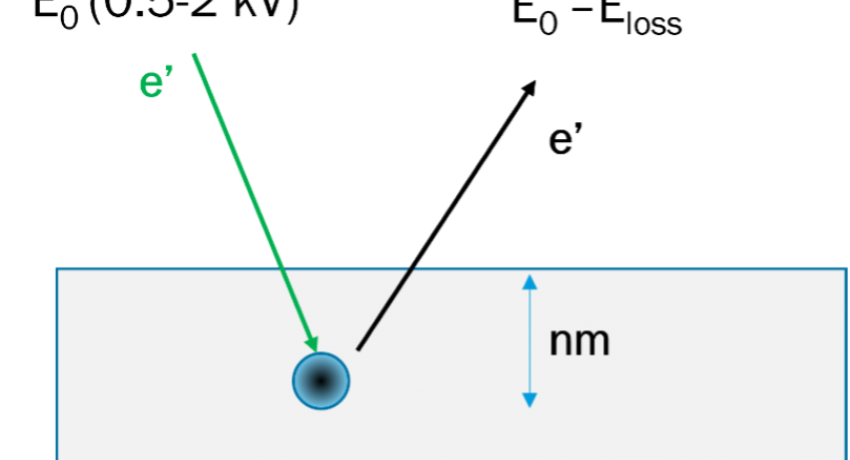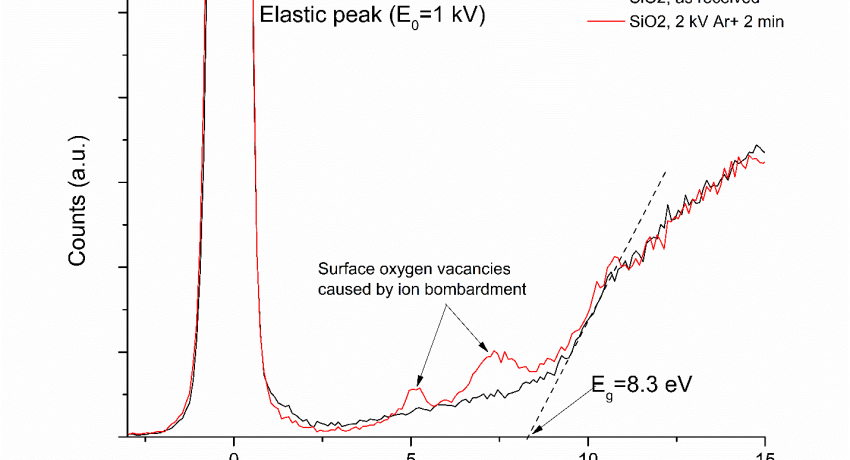Reflection Electron Energy Loss Spectroscopy (REELS) is a technique that involves impinging an electron beam (0.5-2.5 kV) on to a solid sample. The resulting scattered electron can transfer energy to electrons in the solid through a number of processes in discrete amounts. The resulting REELS spectrum can provide electronic information such as the band gap of materials with Eg > 3 eV and defect states such as surface oxygen vacancies (SOV) that reside within the band gap.
Energy losses can also occur via differing masses of atoms that the electrons recoil from. One important element that can be detected in favorable cases is hydrogen.
Schematic of REELS experiment where low energy electron scatters from the near-surface of a sample and is detected above the sample.
REELS spectra from SiO2 and Ar+ sputtered SiO2 showing band gap and creation of 2 surface oxygen vacancy states.
The REELS is part of our surface science cluster tool that also includes: XPS, Auger, UPS and low energy inverse photoemission spectroscopy (LEIPS) in one tool. Our REELS has energy resolution of <0.5 eV and can operate from 0.5-2.0 kV on any vacuum-compatible sample.
- Band gap of materials with Eg > 3 eV.
- Detection of certain surface and bulk defect states (e.g., oxygen vacancies, etc).
- Detection of hydrogen on a surface.



